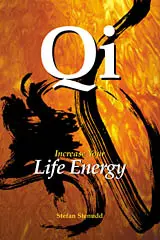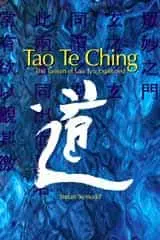|
Qi Energy Exercises
|
Qi Posture Exercise 5 SitFew things are as damaging to the posture of modern western people as the way we sit. In our chairs it is close to impossible at length to keep a good posture. This is mainly due to the right angle between the legs and the torso, which is so strenuous on the back that it soon bends and tends to remain in that position.
In addition to that, work desks and dining tables and the like are usually so low that you have to bend your back even more. But mainly, we sit too much in chairs — and it is not good, even if we should manage to keep a good posture, which we do not.
Some authors prefer to do their writing standing up. That may be a way of avoiding the seated body's itch to move away from the work place. Ideally, we should have our working stations arranged so that we could easily and frequently switch between sitting and standing. In the East, people often sit on the floor. Westerners usually find that very uncomfortable. Still, I would like to introduce an exercise of sitting, among those aimed to improve your posture, because correct sitting helps a lot in finding and cultivating a good posture. Try it, even if stiff joints protest. You do not have to sit for long when you do the exercise, and if you persist you will soon be able to do it with greater ease. You can sit right on the floor, which is kind of rough, but it is also fine to do it on a blanket. You can even fold it a couple of times, to make it softer to sit on. A pillow or a mattress, though, will be too thick for you to find your own balance. Also, on something that is both thick and soft, you sink down and sort of get stuck — often in a bad position of the body that is quite difficult to correct on such a surface. Make sure not to wear clothes that tighten around your waist, because that pressure is likely to increase when you sit down. Of course, there are many ways to sit, some better for the posture than others. I would like to divide them into two kinds: one kind is with your legs in front of you, and the other with the legs under you. The first kind includes such seated position as with your legs crossed, or simply squatting with or without your buttocks on the floor. Regular sitting in a chair would also belong to this category. All these ways of sitting with your legs in front of you are regarded as more comfortable than the other kind, with your legs under you. Still, the latter is the kind I choose for this exercise. Those of the first kind make it very difficult for you to keep a straight back. The hips tend to tip backward quite forcefully. The second kind, which can really just be done in one way, is such that your back practically by itself assumes the right position. That makes it particularly advantageous when you are about to learn a good posture. In this way of sitting, your shinbones and the upper sides of your feet are on the floor, your knees are parted slightly, and your buttocks press on the heels, or sink down between them. It is the most common sitting in traditional Japanese culture. Unfortunately, many westerners are so stiff from a life in chairs that their knees will not bend enough for their buttocks to meet the heels. If that is the case with you, you can put a pillow in the gap. Since it is not altogether certain that you sit down with a perfect posture at the first try, you should do the sitting exercise after the above exercises. They have surely improved your standing posture, which is the one you should bring with you when you sit down.
How to do it
Everyday life tends to be full of unsuitable sitting in bad chairs, so this exercise is a healthy alternative. You do not need to do this exercise as much as you spend time in chairs, far from it. But if you never sit in any other way than in chairs, then all that sitting is sure to sabotage any work you do on your posture. With some frequency, allow your body to experience what sitting with a good posture is like.
Qi Posture ExercisesHere is a set of simple exercises by which to improve your posture. That's essential in order to increase your qi energy flow. I recommend that you do them in the given order, when you try them out. Once you've become familiar with them, you can do them in any order you please. Trust your instincts.
Qi Energy Exercises
Qi Exercise Settings
Qi Energy Breathing
Qi Posture
Qi Relaxation
Qi Extension
Qi Centering
The Book
My Books About Life EnergyHere are the two books I have written on the subject of life energy. This website contains some of the material from the first one. Click the image to see the book at Amazon (paid link).
About CookiesMy Other WebsitesLife EnergyThe many life force beliefs all over the world, ancient and modern, explained.
TaoisticTaoism, the old Chinese philosophy of life, based on Tao, the Way. Also, the complete Tao Te Ching translated and explained.
AikidoAikido, the peaceful martial art. Its basics, principles, techniques, and more — in texts, images and videos.
I Ching OnlineThe 64 hexagrams of the Chinese classic I Ching and what they mean in divination. Free online reading.
Other Books by MeClick the image to see the book at Amazon (paid link).

Stefan StenuddAbout Me I'm a Swedish author and aikido instructor. I've written several books about aikido, qi energy and other life force concepts. I'm also an historian of ideas, researching the thought patterns in creation myths. Click the image to get to my personal website. Contact
|
 Qi — Increase Your Life Energy
Qi — Increase Your Life Energy There are chairs designed to give a better angle between the back and the legs, making the latter lean downward. But these odd creations have not replaced many normal chairs. Anyway, it is not possible to sit comfortably in such chairs for long either, and it is more difficult to vary your seated position in them, compared to ordinary chairs. You need to move about, even if it is only in your chair.
There are chairs designed to give a better angle between the back and the legs, making the latter lean downward. But these odd creations have not replaced many normal chairs. Anyway, it is not possible to sit comfortably in such chairs for long either, and it is more difficult to vary your seated position in them, compared to ordinary chairs. You need to move about, even if it is only in your chair.


